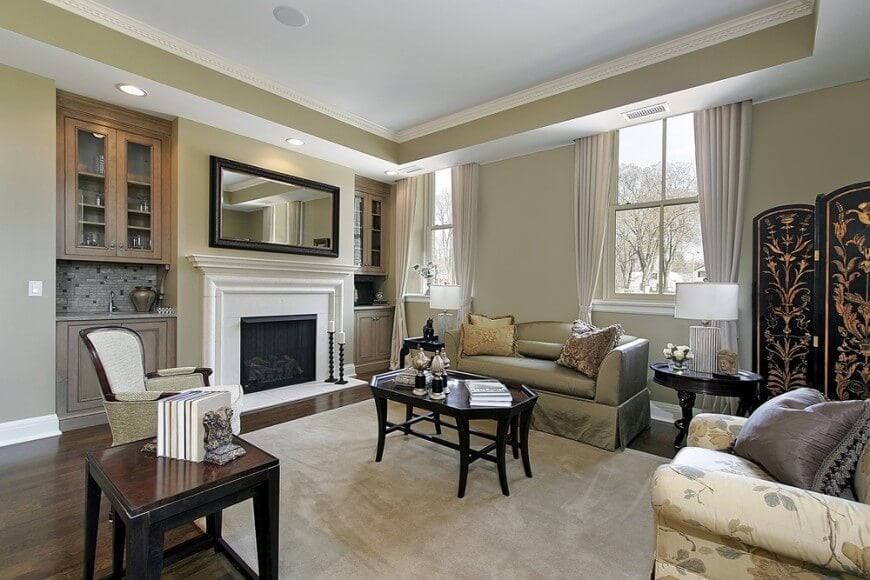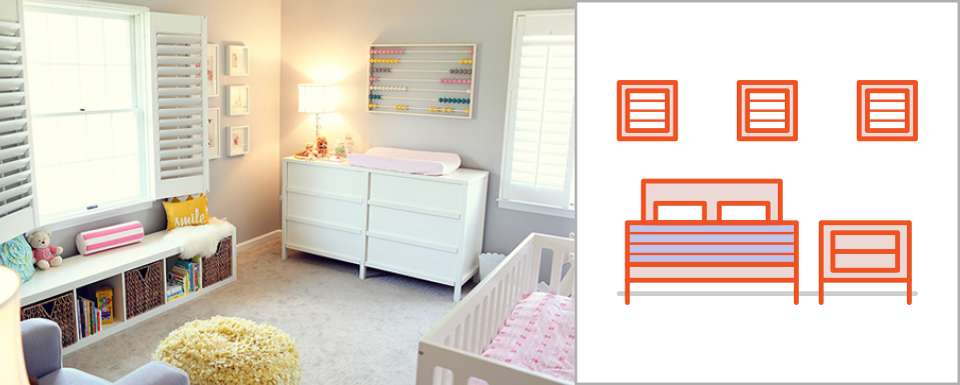
Do you feel cramped and crowded in your small home? Or maybe you’re looking at going smaller for your first home? Either way, if you’re a bit short on the square footage, it doesn’t mean your home has to feel small. With a few tips and tricks, you can make your home feel bigger on the inside.
Here are several ideas that can have you well on the way to a seemingly roomier home.
Clean and Organize
Before you do anything else, you need to clean and organize your home. Pick up the clutter. The clothes lying on the floor, magazines, remotes, pens, junk mail, spare change - the list can go on and on. Clean floors and tabletops go a long way in making your small spaces look larger, and it only costs you a bit of physical effort. A room will always feel larger if you keep it clean and organized. But don’t take our word for it - try it yourself, and find out!
MAXIMIZE Your Furniture
Making a small space look larger requires a good sense for consolidating space. Use a coffee table or end table that has drawers. Then take the items from the surfaces and put them in the drawers. Remotes, magazines, phone chargers can all go into drawers instead of using space on your living room surfaces. Additionally, utilize raised furniture to give the illusion of greater space (just make sure the space underneath is clean and clear).
You can also be sneaky with decorative containers, serving doubly as storage, ornately stacked on an end table. There are plenty of furniture options that have concealed storage underneath a cushion, as well.
Another way to make the most of your furniture is to use fold-away tables and chairs. Preparing for a party? Use a nice folding table for your food prep work, and then clean it up and fold it away and break out the folding barstools before the guests arrive.
Select Colors Wisely
Trim and ceiling paint have just as much impact as the paint on your walls. Using a slightly lighter shade of your wall color on your trim will make it feel further away. Case in point:

Source: HomeStratosphere.com
Embrace the Mirror Illusion
A well-placed, large mirror can make any room appear larger. Do you have a couple closet doors in your small bedroom? Hang mirrors on the doors! The larger the mirror, the greater the impact. Have an empty wall in your entryway? Time for a mirror or even a trio of smaller, decorative mirrors.
Of course, don’t let yourself get carried away and accidentally turn your home into an amusement park funhouse - remain strategic and play around with arrangements. The point is, a well-placed mirror can work wonders.
Cut the Excess
Do you need two end tables flanking your couch, as well as another by the recliner and two more by your windows? How about the other two by your bed and the one in the bathroom? Do you need seemingly a million knick-knacks lining the tops of your cabinets and shelving?
If you haven’t used a piece of furniture in a year or have any decorations smaller than a cantaloupe (see the cantaloupe rule), to the storage unit or flea market they go! This will help you cleanse your home of clutter. And if you’re just starting on your first home, avoid picking up clutter now to save headache later.
Coordinate Your Light Sources
Natural light is great for making rooms seem spacious. Coordinate your natural light with lighter wall and drape colors for maximum effect. During the night, rather than using one larger, central ceiling fixture, direct eyes throughout the entire room using a series of smaller lamps.
Remove Doors and Walls
Don't judge a book by its cover, right? Well, what looks like a small home on the outside can be quite roomy on the inside if you have the resources and are willing to apply a little elbow grease. Taking out unnecessary doors and walls (avoiding load-bearing ones) will definitely open the place up.
Keep Lines Harmonious
If you have a room full of vertical line patterns, you don’t want to have a random patch of horizontal lines. Keep most of your lines flowing in the same direction, or have a carefully coordinated plan for how to integrate other patterns. Notice how the lines in the room below are coordinated:

Source: Shutterfly


